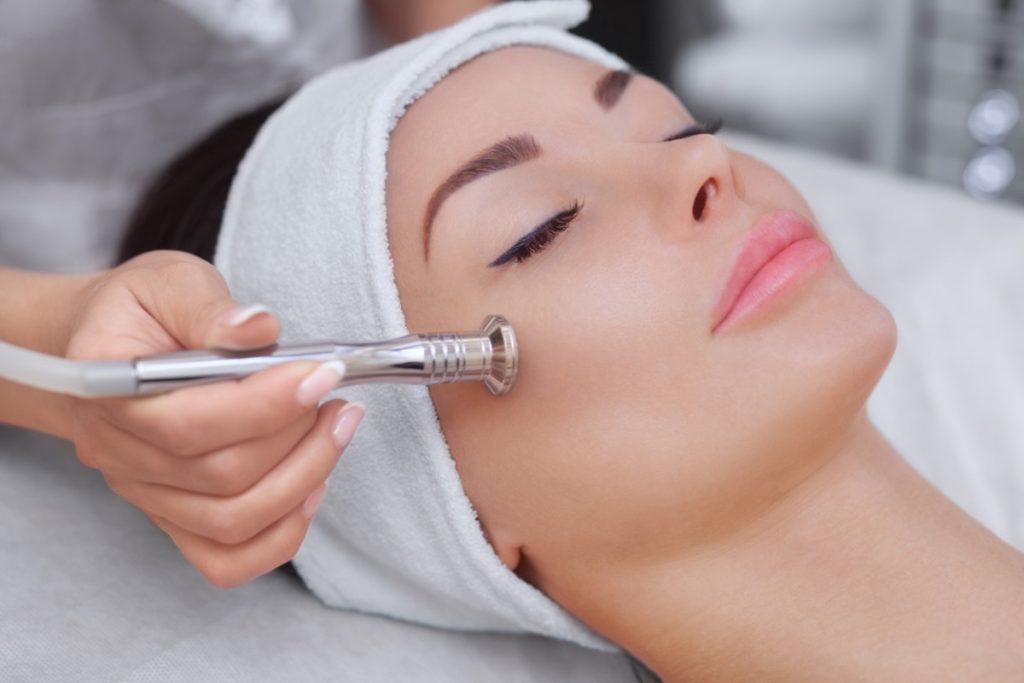Benefits of Microdermabrasion
Clearer Skin
Microdermabrasion benefits include clearer skin. The treatment removes dead skin cells. This reveals a brighter complexion. Regular use can help reduce acne scars and blackheads. It also unclogs pores, preventing future breakouts.
Cost Savings
Performing microdermabrasion at home saves money. Professional treatments can be expensive. Home microdermabrasion devices are a one-time purchase. These devices offer similar results to professional sessions. They provide an affordable way to maintain healthy skin.
Convenience
At-home microdermabrasion is convenient. You can perform the treatment anytime. There is no need to schedule appointments or travel to a spa. This flexibility allows for consistent skincare routines. It fits easily into busy lifestyles.
Improved Absorption
Microdermabrasion improves skincare product absorption. By removing dead skin cells, new cells are exposed. This allows creams and serums to penetrate deeper. Products become more effective, enhancing their benefits.
Non-Invasive
Microdermabrasion is non-invasive. It does not involve chemicals or needles. The procedure uses a gentle exfoliating technique. This makes it suitable for all skin types, including sensitive skin.
Immediate Results
Results from microdermabrasion are immediate. Skin appears smoother and more radiant after one session. Continued use leads to long-term improvements in texture and tone.
Understanding the Process
Mechanical Exfoliation
Microdermabrasion is a mechanical exfoliation technique. It uses fine crystals or a diamond tip to remove the outermost layer of skin. This process helps reveal smoother and fresher skin underneath.
Fine crystals are often made from aluminum oxide. These crystals gently abrade the skin’s surface. The diamond tip, on the other hand, uses a roughened surface to achieve similar results. Both methods effectively remove dead skin cells and impurities.
Professional vs. At-Home Kits
Professional microdermabrasion treatments are usually more powerful. Dermatologists or estheticians perform these treatments using advanced machines. These machines can penetrate deeper into the skin layers.
At-home kits are less powerful. They are designed for safer use by non-professionals. These kits provide a gentler exfoliation compared to professional treatments. However, they still offer noticeable improvements in skin texture and appearance.
Following Instructions
Following instructions carefully is crucial when using at-home microdermabrasion kits. Incorrect usage can lead to skin irritation or damage. Always read the instruction manual thoroughly before starting.
Here are some key points to remember:
-
Start with clean skin: Ensure your face is free of makeup and dirt.
-
Use gentle pressure: Avoid pressing too hard on your skin.
-
Limit treatment time: Do not exceed the recommended duration for each session.
-
Moisturize afterward: Apply a hydrating moisturizer to soothe your skin post-treatment.
Choosing the Right Kit
Skin Type
Different skin types need different kits. Oily skin benefits from kits with stronger suction. Dry skin needs gentler tools to avoid irritation. Sensitive skin should use kits with adjustable settings. High customer satisfaction products on Amazon include the Microderm GLO Diamond Microdermabrasion Machine for sensitive skin and the Kendal Professional Diamond Microdermabrasion Machine for oily skin.
Specific Concerns
Consider your specific skin concerns. For acne scars, look for kits with diamond tips. Hyperpigmentation requires kits that offer both suction and exfoliation. Popular choices on Amazon are the Trophy Skin MicrodermMD for acne scars and the PMD Personal Microderm Classic for hyperpigmentation.
Sustainability Features
Sustainability is important. Choose kits that are eco-friendly. Look for reusable tips and filters. Kits from small business brands often focus on sustainability. The ECO FACE Platinum LED Mask is a great example. It supports Amazon’s commitment to empowering small businesses while being eco-friendly.
Small Business Brands
Support small business brands when possible. They often offer unique features and better customer service. The Silk’n Revit Prestige is a good option. It has high reviews and supports small businesses. This aligns with Amazon’s goal of helping smaller brands grow.
Additional Savings
Look for additional savings options. Many kits come with discounts or coupons on Amazon. Some offer Subscribe & Save options for extra savings. The Microderm GLO MINI often has coupons available, making it more affordable.
Step-by-Step Guide
Preparation
Start by gathering all the necessary items. These include your microdermabrasion kit, a gentle cleanser, a soft towel, and a moisturizer. Ensure your kit is fully charged if it’s battery-operated.
Before beginning, wash your hands thoroughly. Then, cleanse your face using a gentle cleanser to remove dirt and oil. Pat your skin dry with a soft towel.
Testing the Device
Always test the device on a small area of your skin first. This helps check for any adverse reactions. Choose an inconspicuous spot like behind your ear.
Turn on the device and use it on the test spot for a few seconds. Wait 24 hours to see if there is any redness or irritation. If there are no issues, proceed with the treatment.
Using the Device
Begin with the lowest setting on your microdermabrasion device. Hold your skin taut with one hand and gently glide the device over your face with the other hand.
Move in upward strokes. Avoid staying in one spot for too long to prevent irritation. Focus on areas with more noticeable concerns like fine lines or scars.
Post-Treatment Care
After finishing with the device, rinse your face with cool water. This helps soothe your skin and removes any remaining debris.
Apply a gentle moisturizer to hydrate and protect your skin. Avoid using products with strong ingredients like retinoids or acids immediately after treatment.
Tips for Maintenance
Regularly clean your microdermabrasion device to maintain its performance. Remove the tip and rinse it under warm water after each use.
Dry all parts completely before reassembling and storing the device. Replace filters as recommended by the manufacturer to ensure optimal results.
Frequency and Schedule
Skin Types
Different skin types need different frequencies of microdermabrasion. Oily skin can usually handle more frequent sessions. Start with once a week. Dry or sensitive skin needs less frequent treatments. Begin with once every two weeks.
Initial Sessions
Start with fewer sessions. This helps your skin adapt to the treatment. For the first month, do one session every two weeks. See how your skin responds. If there is no irritation, you can increase the frequency.
Gradual Increase
After the initial month, gradually increase the frequency. Move to weekly sessions if your skin shows no signs of over-exfoliation. For normal skin, once a week is ideal. Oily skin may handle twice a week.
Listening to Your Skin
Always listen to your skin’s response. If you notice redness, irritation, or dryness, reduce the frequency. Give your skin time to heal before the next session. Adjust based on how your skin feels.
Long-Term Schedule
For long-term maintenance, find a schedule that works best for you:
-
Oily Skin: 1-2 times per week
-
Normal Skin: Once a week
-
Dry/Sensitive Skin: Every two weeks
Skin Type Suitability
Oily Skin
Oily skin can benefit greatly from microdermabrasion. The treatment removes dead skin cells and excess oil. This helps unclog pores and reduce the occurrence of acne. It also improves the appearance of large pores, making the skin look smoother.

Acne-Prone Skin
Microdermabrasion can be effective for acne-prone skin. The procedure exfoliates the top layer of the skin. This reduces blackheads and whiteheads. However, it’s crucial to avoid active acne areas to prevent irritation.
Aging Skin
Aging skin shows signs like fine lines and wrinkles. Microdermabrasion stimulates collagen production. This helps improve skin elasticity and reduces the appearance of fine lines. Regular sessions can make the skin look younger and more vibrant.
Sensitive Skin
Sensitive skin requires caution with microdermabrasion. The procedure might cause redness and irritation. It’s best to consult a dermatologist before trying it at home. They can recommend suitable products and techniques.
Active Acne
Active acne is not ideal for microdermabrasion. The treatment can aggravate inflammation. It may spread bacteria, worsening the condition. Always seek professional advice before proceeding.
Rosacea
Rosacea sufferers should be cautious with microdermabrasion. The treatment may exacerbate redness and irritation. Consulting a dermatologist is essential in these cases.
Post-Treatment Care
After microdermabrasion, use gentle skincare products. Avoid harsh ingredients like alcohol or fragrances. Opt for soothing lotions or creams to support healing.
Best Practices for Safety
Read Manual
Always read the product manual thoroughly. Each microdermabrasion device has specific instructions. These instructions ensure correct usage and prevent skin damage.
Manufacturers include guidelines for a reason. Ignoring these guidelines can lead to serious skin issues. Follow the recommended settings and techniques.
Use Sunscreen
After treatment, your skin becomes more sensitive to sunlight. Apply sunscreen immediately after a microdermabrasion session. This protects the newly exposed skin layer from UV damage.
Choose a broad-spectrum sunscreen with at least SPF 30. Reapply every two hours if you are outdoors. Sunscreen helps prevent sunburn and long-term skin damage.
Avoid Other Exfoliations
Do not use other forms of exfoliation before or after microdermabrasion. This includes chemical peels, scrubs, and retinol products. Over-exfoliation can irritate your skin and cause redness.
Give your skin time to recover between treatments. Allow at least one week between different types of exfoliation. Your skin needs this time to heal properly.
Clean Tools
Ensure all tools are clean before use. Bacteria on the device can cause infections. Clean the device according to the manufacturer’s instructions.
Use alcohol wipes or a mild soap solution to disinfect the tool. Proper cleaning prevents bacterial contamination and keeps your skin safe.
Patch Test
Perform a patch test before full use. Apply the device on a small area of skin first. This checks for any adverse reactions like redness or irritation.
Wait 24 hours after the patch test. If no reaction occurs, proceed with the full treatment. Patch testing ensures your skin tolerates the procedure.
Moisturize After Treatment
Hydrate your skin with a gentle moisturizer post-treatment. Microdermabrasion can leave your skin dry and flaky. Choose a non-comedogenic moisturizer that won’t clog pores.
Apply moisturizer twice daily to keep your skin soft and hydrated. Moisturizing aids in faster recovery and maintains skin health.
Limit Frequency
Limit the frequency of at-home microdermabrasion sessions. Overuse can lead to thinning of the skin and increased sensitivity.
Stick to once every two weeks for best results. Frequent treatments may harm rather than help your skin.
Consult Professionals
If unsure, consult a dermatologist before starting at-home treatments. They can provide personalized advice based on your skin type and condition.
Professional guidance ensures you follow safe practices tailored to your needs. Dermatologists help avoid potential risks and complications.
Comparing Exfoliation Methods
Microdermabrasion vs. Chemical Peels
Microdermabrasion and chemical peels are popular exfoliation techniques. Microdermabrasion uses a device to remove the outer layer of skin. It works well for most skin types and offers immediate results.
Chemical peels use acids to dissolve dead skin cells. They can be stronger and more intense than microdermabrasion. These peels may cause redness, peeling, and other side effects. They are often not suitable for sensitive skin.
Microdermabrasion vs. Manual Scrubs
Manual scrubs involve rubbing the skin with gritty substances. This type of physical exfoliation is gentle and easy to do at home. However, it might not be as effective as microdermabrasion.
Microdermabrasion provides a more thorough exfoliation. It uses an exfoliative device to ensure even and consistent removal of dead skin cells. Manual scrubs can sometimes cause irritation if used too harshly.
Effectiveness and Suitability
Microdermabrasion offers a middle ground between manual scrubs and chemical peels. It is effective in physically removing the outermost layer of dead skin cells. This leads to immediate improvement in skin texture and tone.
Chemical peels are good for deeper exfoliation but can be risky for some skin types. Manual scrubs are gentle but might not provide strong exfoliation. Microdermabrasion is suitable for those looking for powerful exfoliating treatments without the intensity of chemical peels.
Benefits of Microdermabrasion
Microdermabrasion has several benefits:
-
Immediate results: Skin looks smoother and brighter right away.
-
Minimal risks: Less likely to cause irritation compared to chemical peels.
-
Suitable for most skin types: Works well on normal, dry, oily, and combination skin.
-
Non-invasive: No downtime needed after treatment.
Using an exfoliation head, microdermabrasion can target specific areas effectively. It is a versatile method that balances effectiveness with safety.
Potential Risks
While microdermabrasion is generally safe, there are potential risks:
-
Minor redness: Skin might appear slightly red after treatment.
-
Sensitivity: Some people may experience temporary sensitivity.
-
Improper use: Using the device incorrectly can cause abrasions or irritation.
Closing Thoughts
Microdermabrasion at home can revolutionize your skincare routine. With the right kit and proper technique, you can achieve glowing, youthful skin without stepping into a spa. It’s safe, effective, and tailored to fit your schedule and skin type.
Now it’s your turn to take action. Grab a microdermabrasion kit and start your journey to radiant skin today. Trust in the process, follow the guide, and enjoy the benefits. Your skin will thank you!
Frequently Asked Questions
What are the benefits of microdermabrasion at home?
Microdermabrasion at home can improve skin texture, reduce fine lines, and enhance product absorption. It’s a cost-effective way to achieve glowing skin.
How often should I do microdermabrasion at home?
For most skin types, once a week is ideal. Sensitive skin may need less frequent treatments, around every two weeks.
Is microdermabrasion suitable for all skin types?
Microdermabrasion suits most skin types but may irritate very sensitive or acne-prone skin. Always do a patch test first.
What should I look for in a microdermabrasion kit?
Choose a kit with adjustable suction levels, replaceable heads, and positive reviews. Ensure it’s suitable for your specific skin type.
Are there any safety precautions for at-home microdermabrasion?
Always follow the instructions. Avoid broken or inflamed skin. Use gentle pressure and don’t overdo it to prevent irritation.
How does microdermabrasion compare to other exfoliation methods?
Microdermabrasion offers deeper exfoliation than scrubs and peels. It’s more effective for improving texture and reducing fine lines.
Can I use other skincare products after microdermabrasion?
Yes, but stick to gentle, hydrating products immediately after treatment. Avoid harsh ingredients like retinoids or acids for 24 hours.





